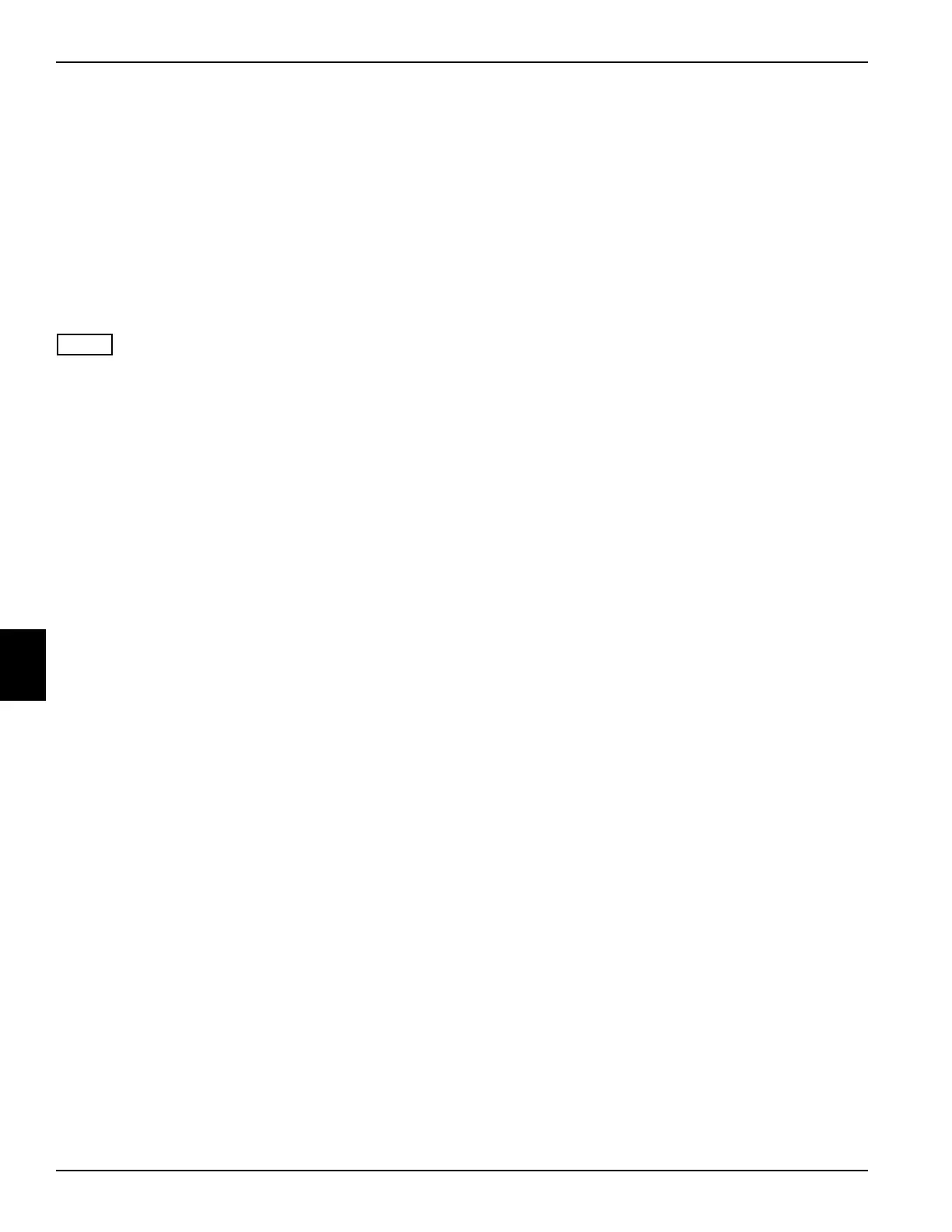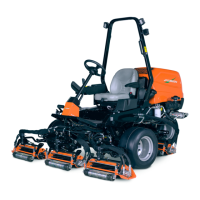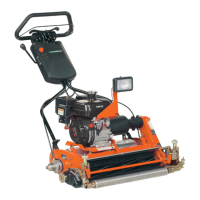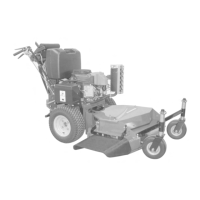6-18 4181383 First Edition
HYDRAULICS
6
Mow Circuit Schematic and Theory of
Operation
Mow Circuit (On) Theory of Operation
See Figure 6-11.
System Conditions:
• Engine running
• Cutting units lowered
• Mow switch in the ON position
• Park brake released
NOTE
See “Mow Circuit—Theory of Operation” on page 4-34
for the electrical operation of this circuit.
Hydraulic oil is drawn from the hydraulic oil tank by the
gear pump assembly, sections 1 and 2. Before entering
the gear pump assembly, the inlet oil is filtered by a
100-mesh screen to remove any debris.
Oil Supply—Right and Left Rear and Center Front
Cutting Unit Motors
Operating-pressure oil from the gear pump (pump
section 1) is supplied to the deck valve at port "P1." Oil
then flows through port “M1” to the left rear, center front,
and right rear cutting unit motors in series.
Operating-pressure oil is also applied to check valve 1 in
the deck valve. The three motor system has a higher
working pressure than the two motor system, therefore
check valve 1 opens and operating pressure oil is applied
against check valve 2 keeping it closed. Oil also flows
through an orifice to the shuttle valve 1 (pilot lines on
both sides of the valve and supply to the valve). With oil
pressure on the pilot lines on both sides of the valve, and
spring bias on one side of the valve, the valve will remain
closed, preventing oil flow. The orifice helps maintain
equal pressure on either side of the shuttle valve. Oil is
also supplied to the solenoid ON valve and logic check
valve, seating the logic check valve against the return
side of the system. With the solenoid ON valve
energized, operating-pressure oil cannot flow through the
valve. Oil pressure forces the logic check valve to open,
allowing the flow of oil to the pilot line of the relief valve.
Oil Supply—Right and Left Front Cutting Unit Motors
Operating-pressure oil from the gear pump (pump
section 2) is supplied to the deck valve at port “P2.” Oil
then flows through port “M2” to the right front, and left
front cutting unit motors. Operating-pressure oil is also
applied to check valve 1 in the deck valve. The three
motor system produces greater pressure than the two
motor system. When check valve 1 opens, operating
pressure is applied against check valve 2 keeping it
closed. Oil also flows through an orifice to the shuttle
valve 1 (pilot lines on both sides of the valve and supply
to the valve). With oil pressure on the pilot lines on both
sides of the valve, and spring pressure on one side of the
valve, the valve will remain closed, preventing oil flow.
The orifice helps maintain equal pressure on either side
of the shuttle valve. Oil is also supplied to the solenoid
ON valve and logic check valve, seating the logic check
valve against the return side of the system. With the
solenoid ON valve energized, operating-pressure oil
cannot flow through the valve. Oil pressure forces the
logic check valve to open, allowing the flow of oil to the
pilot line of the relief valve.
System Relief
If there is resistance to flow at the cutting unit motors,
causing oil pressure to rise above the relief valve setting
of 2600 psi (179 bar), the relief valve will open. When the
relief valve opens, oil flows through the orifice at shuttle
valve 1, resulting in a pressure drop allowing shuttle valve
one to shift permitting full pump flow to return to filter,
cooler and tank.
Oil Return
Return oil from the cutting unit motors enters the deck
valve through ports “R1” (right and left front cutting unit
motors) and “R2” (right and left rear and center front
cutting unit motors) and flows through the solenoid ON
valve and shuttle valve 2. It then flows back to the return
filter and oil cooler and back to the hydraulic oil tank.
The return filter and oil cooler are equipped with crack
bypass valves. If either of them becomes clogged and
restricts oil flow, the valve(s) will open to allow oil to
bypass the return filter (or oil cooler) to allow oil to flow to
the hydraulic oil tank.
Oil that leaks through the motors drains back to the
hydraulic oil tank through the case drain hoses.
Mow Circuit (Off) Theory of Operation
See Figure 6-12.
System Conditions:
• Engine running
• Cutting units lowered
• Mow switch in the OFF position
• Park brake released
Operating-pressure oil from the gear pump (pump
section 1) is supplied to the deck valve at port “P1” and
from (pump section 2) at deck valve port “P2.”
Operating-pressure oil then flows to, and opens, check
valves 1 and 2. Oil also flows to all system deck motors,
pressurizing the system. With system operating-oil
pressure equal in the system, spring biased shuttle valve
2 shifts to the closed position. With the solenoid valve in
the OFF position, oil is forced to drain to the hydraulic
tank, allowing the spring biased shuttle valve 1 to shift
open, creating a direct path to drain oil.

